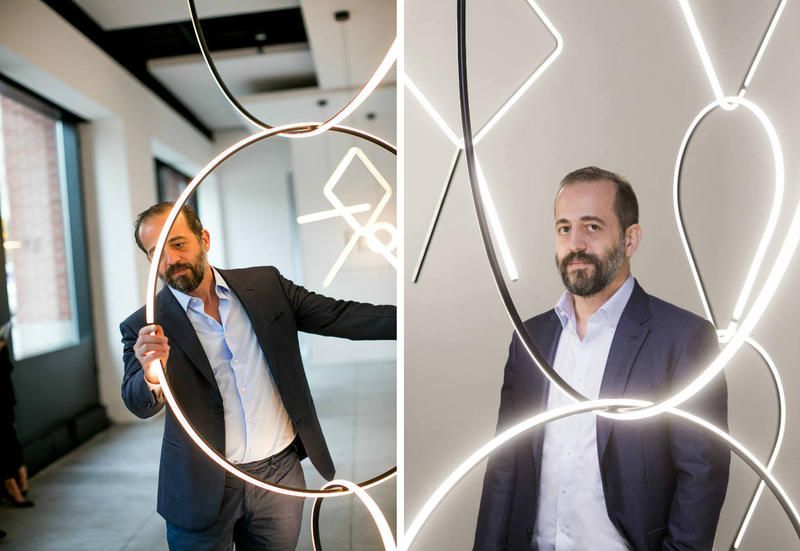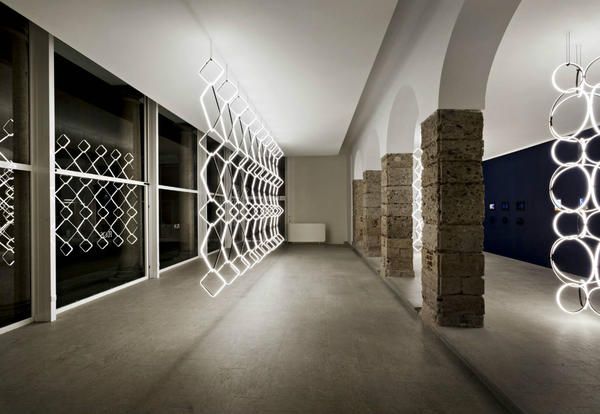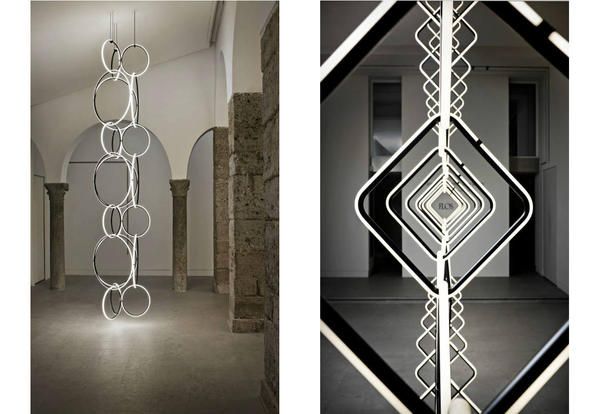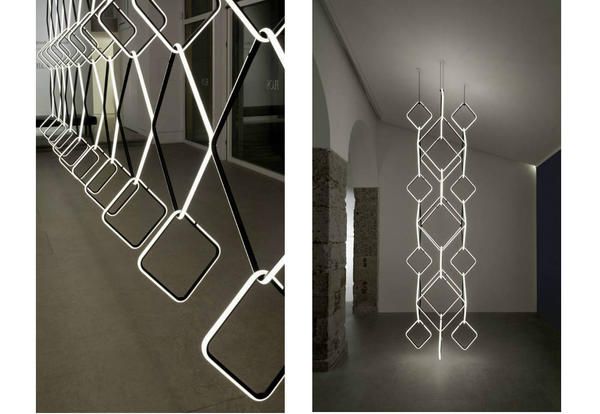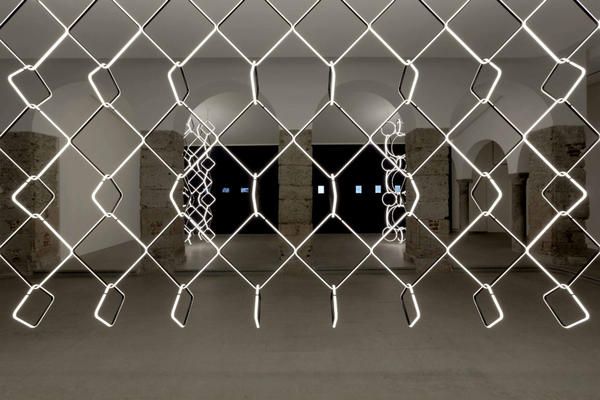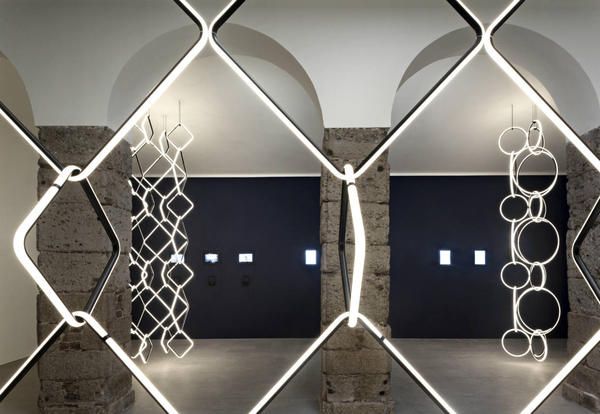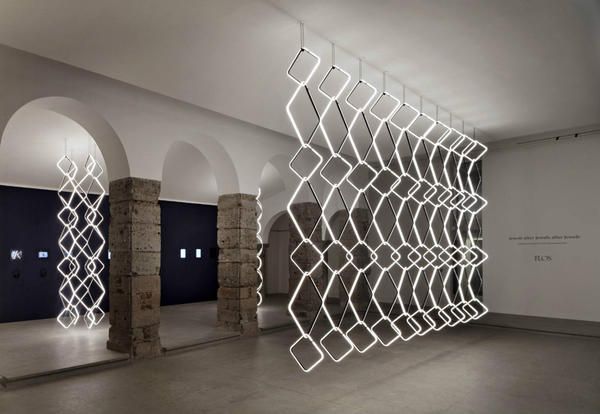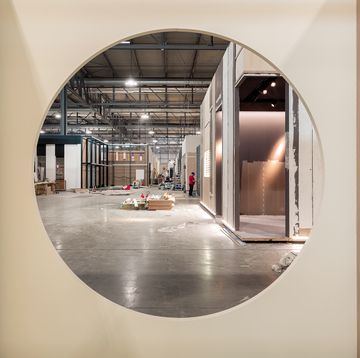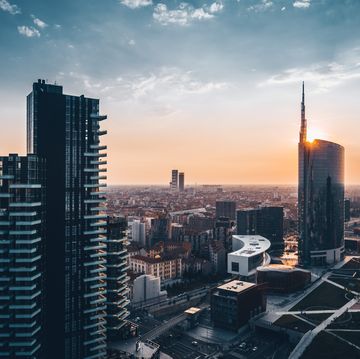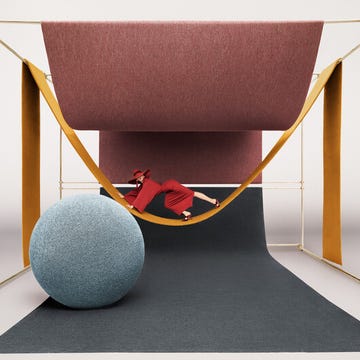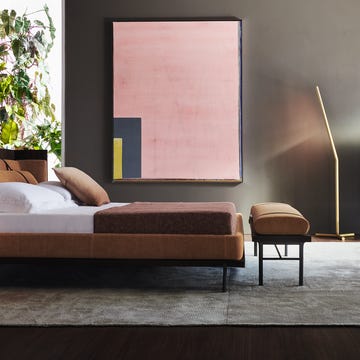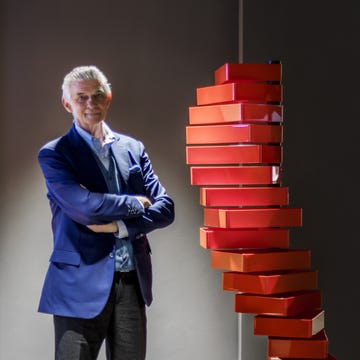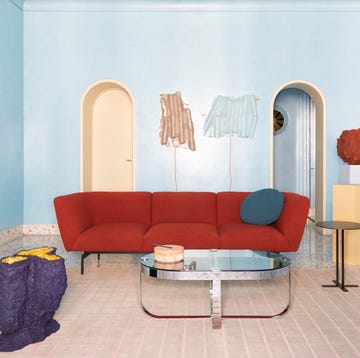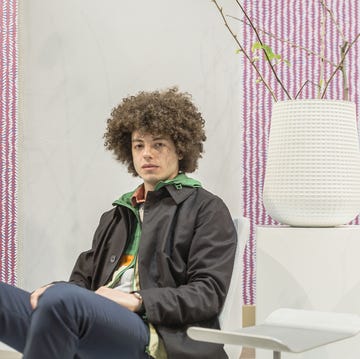Michael Anastassiades, and Light par excellence, reduced to the bare essentials.
Of Cypriot origins, he has been living in London for 30 years, and his design and research work is primarily on lighting, in a close collaboration with Flos.
Michael Anastassiades is at the Milano Design Week to present the Arrangements collection with the historic company from Brescia. Arrangements was previewed last year at Euroluce and is now produced and available on the market. We sat down for a chat, following some keywords: discipline, light, failures, Instagram, yoga and Cyprus.
Your work is essentiality and rigour, I would say discipline.
You need discipline in your life. Discipline makes you think, gives you structure, something that can help you get from one place to another. I can speak from my own experience. At the beginning, “I was never invited to the party,” I wasn’t on the guest lists, it was frustrating but I found the definition of design on my own way. What does design mean to me? And at the time I thought design was very different, long time ago, 20 years ago, and I learnt my own way and I found my own heart through design and I see myself in it now. And maybe now it doesn’t feel so different from what they were telling me 20 years ago. But you have to go through it to find yourself.
Designers are always asked: “How did you get there?”. People think that suddenly you jump to it. It’s not true, I never believed that I got somewhere. I still feel that I am walking, very, very slowly.
After civil engineering, I studied industrial design for two years at the Royal Academy of Art in London. At that time I thought it was not enough and I that I needed to extend my design education, but not necessarily in an institution. I decided to do it personally; and I think this was more constructive.
Why do you think so?
Because design education taught me what I didn’t what to do, and what I didn’t want to be. So what was the point of continuing my studies in an institution that was telling me what I didn’t want to do? I could find it in real life. And that’s what I did. I continued by myself my research into design
Design and in particular lighting, you have entered more and more into this field, up to becoming today one of its leading interpreters, or better yet, protagonists.
First of all, I feel like a small fish in a big pond. I found myself doing lighting completely by accident. I was very drawn to the medium, I mean lighting is a very poetic medium, let’s face it, it’s very beautiful, there is something magical about it.
Why?
Light is a very different from other fields, because light lives in two different scenarios: one when it’s on and one when it’s off. And when it’s on it’s only like 20% of its life. When it’s off is about 80% of its life, but this 20% is when something completely different happens, when you turn the light on, the space that the light occupies suddenly becomes very different. You talk about the visual space that light occupies, the shadows that light creates in relation to all the sculptural forms as well as to the other objects around it, and in relation to the space. So it’s not anymore a dead object. Even when it’s off it has a sculptural quality, which has to be addressed completely differently. So it’s like designing for two different lights. And that is what is different for lighting, and that’s what is more challenging.
Do you think about the ambiance and atmosphere that a particular light will create?
Well, I always design starting with a focus on the glow, from something glowing. When I start to design a light, I start from that. And for me that is important: I believe in warmth, in the quality of the light; I believe also in the right intensity of the light. I really believe that lighting is not something that is here to make the night into a day, and the night is a very different scenario. And you have to embrace the night for what it is and light at night has to function. I think you have to embrace darkness in order to appreciate lighting. And design light as well.
And, as you were saying, you happened to be in this field by accident.
Yes, it was by accident but of course I was drawn. The first object that I tried was a light, and therefore when I made this object a lot of people complimented. There was a lot encouragement from their side, so I decided it to try more. When eventually I put my design together as a collection, before I even launched my own brand, I suddenly saw that I had more lights than other objects. And then I said to myself: ok, when I create my brand, it will have to be mainly a lighting brand, also because it is more manageable as well, for me.
On the one hand you have your own eponymous brand, and on the other your close collaboration with Flos. How do you decide when an idea is for you or for them?
Actually it doesn’t matter; I don’t see my work produced by myself as different from the work that I produce with Flos. For me it’s important not to differentiate the work, I like the opportunity and freedom to design for them. Usually with Flos I try to realize maybe more technological challenges in projects, for their knowledge, their capacity to produce more technologically ambitious projects. And I think with the incredible knowledge of the R&D department (Research & Development, ndr) they support, their encouragement, this is when you realize actually that working with a company can also be an act of freedom. Before I always thought that working for a company you had to compromise.
Your research and style are “to remove, remove" to arrive at the bare essentials.
I think you are bombarded with information, and it’s also a distillation process. I think by removing information you manage to bring out the idea behind the product, and behind your thought. In the case of Arrangements you also remove a structure, but in others I keep it.
A project or an idea that you tried but was not successful?
Well, it might be not successful commercially but it will definitely be successful in terms of what you learn. I think it doesn’t matter, it’s irrelevant the commercial success or not, of course when you work for a company you feel the obligation to create something that will sell, and it’s also a great satisfaction to achieve that. But it’s also important to realize projects that are challenging even if people are not ready to consume them in a way.
I believe in designing with an approach to timelessness, to design something that will last for many years. I am not so bothered if something is not successful immediately, because there is always a chance that in the years to follow people will actually appreciate it and it will grow then. I am constantly challenging myself and the most important element is the relationship of design with time, because everything eventually will be tested by time.
What do you mean? Timelessness, how do you achieve it?
Looking for quality and relevance in the future. It’s what matters today, there is so much superficiality, associated with consumption, everybody seems to want new ideas, looking for new information, everything is so image-driven and so superficial and I think you need to look beyond that, trying to look at the objects that exist beyond the image. And there are a lot of things that come into play. First it’s materiality, you look for materials that actually age very well, that become better with time. Also familiarity is very important.
What do you mean?
Familiarity: I look for forms or shapes that are familiar to me, to Flos, to everyone in my design. I look for forms that I am not scared have been repeated in the past. It’s the way you interpret it that is important. People are scared of familiarity because they think that they are not innovative enough, that they don’t dare enough, everybody is trying so many different things. But nobody really embraces familiarity in a way that they look at it as a challenge to reinterpret something familiar, and make it work. Again, it’s like taking a risk and giving it a completely different view and you view the object in a different light.
Arrangements was launched at last year’s Salone del Mobile on the occasion of Euroluce. During the Milano Design Week 2018 the show of light is on display at Flos in corso Monforte, with the installation “Jewels after Jewels after Jewels”. Where else can we find you these days?
I am in via Durini: at Cassina I present a table and at B&B a shelving system. And I am also in via Solferino, Fantini, for a project with Fantini in collaboration with Boffi, which is called “aboutwater”.
Let’s go to… Instagram, if you like. I had a look at your Instagram, just six or seven images, with rocks, waters, sunsets. No products at all. I didn’t expect this.
I am not a big Instagram user. It’s an interesting platform and I follow it, I am curious to see what other people put, but when it comes to feeding my own Instagram… I don’t want it to be a platform for me to show off or promote my ideas, because I really believe that ideas should be seen in real world and used. We live in a very image driven society unfortunately, so the images that intrigue me on Instagram are obviously things I have a passion for, which are: number one, natural light, and reflections; number two, I have passion for water, I love swimming, and then third, I love stones.
It’s nice how it reflects you in a very personal and sincere way. And also yoga is a passion for you, right?
I discovered yoga by accident, it was 1993. It was an interesting time for me, I had just graduated from design. A friend of mine took me to a class in London, imagine yoga classes in London at the time; nobody was talking about it. It was considered something from the seventies, a thing for some hippies from India, no one was doing yoga. If my friend had said to me “come and try some yoga, I have would said no!”. So, she said to me, "Come, I want to take you to a stretching class." And I realized I was in a wrong place! But I felt so great after the class. About everything: about the breathing, the pace, turning the attention to yourself. And then I used to teach it a lot.
To conclude, let’s go back to your origins and hometown: Cyprus.
You are about to ask me if there is something in my design from that land? Absolutely. I think in everything I do there is something about England, where I live, about Italy, where I come a lot for work, and of course about Cyprus, because you can’t erase your past. It’s important and you need to carry with you. I left Cyprus when I was 21, to study in London, so it is 30 years ago now. Every experience you have in life affects the way you think and work.
Opening Photo: MICHAEL ANASTASSIADES FOR FLOS. BORN IN CYPRUS, THE DESIGNER LIVES AND WORKS LONDON.
